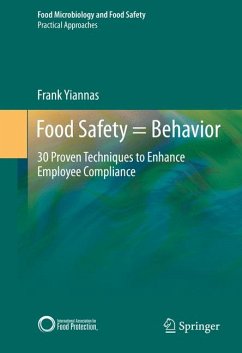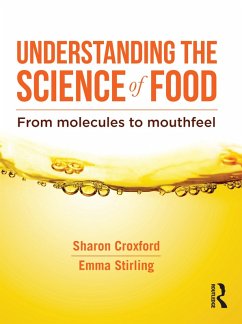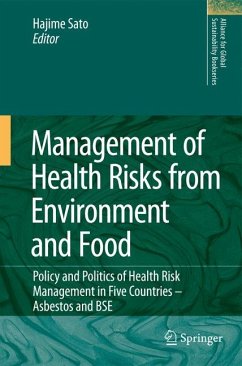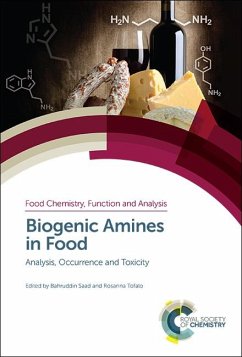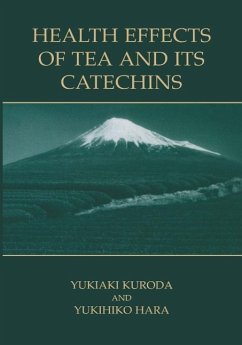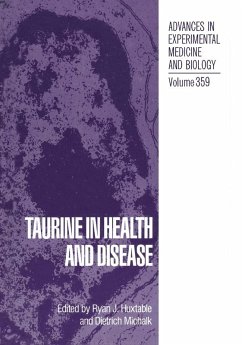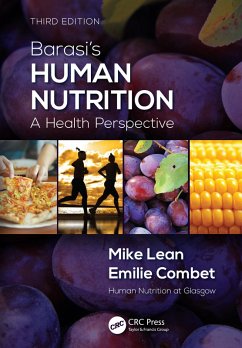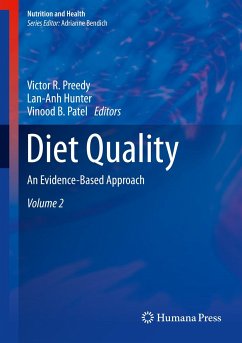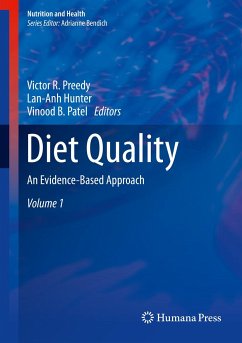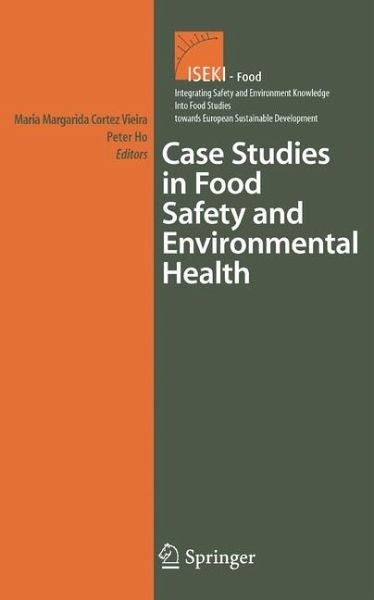
Case Studies in Food Safety and Environmental Health (eBook, PDF)
Versandkostenfrei!
Sofort per Download lieferbar
72,95 €
inkl. MwSt.
Weitere Ausgaben:

PAYBACK Punkte
36 °P sammeln!
Case Studies in Food Safety and Environmental Health, the sixth volume of the ISEKI-Food book series, presents food safety concepts and issues in a practical and applied framework for use in the classroom.The book is divided into three main sections: microbial food safety chemical residues and contaminants risk assessment and food legislationThese sections can be used individually or together as a series to discuss a range of food safety issues. Section One covers specific food safety issues such as acrylamide, nitrate contamination, residual pesticides, Clostridium botulinum, and botulism. S...
Case Studies in Food Safety and Environmental Health, the sixth volume of the ISEKI-Food book series, presents food safety concepts and issues in a practical and applied framework for use in the classroom.
The book is divided into three main sections:
These sections can be used individually or together as a series to discuss a range of food safety issues. Section One covers specific food safety issues such as acrylamide, nitrate contamination, residual pesticides, Clostridium botulinum, and botulism. Section Two discusses the historical perspective of food safety issues. Section Three looks at food safety from the standpoint of the researcher: examining food safety issues at hand while figuring out how to approach their investigation. Each chapter has a summary of the issues discussed, objectives, and discussion questions focused on the major issues and other relevant factors.
The ISEKI-Food book series is a collection where various aspects of food safety and environmental issues are introduced and reviewed by scientists specializing in the field. In all of the books a special emphasis is placed on including case studies applicable to each specific topic. The books are intended for graduate students and senior level undergraduate students as well as professionals and researchers interested in food safety and environmental issues applicable to food safety.
"ISEKI-Food" is an acronym for "Integrating Safety and Environmental Knowledge Into Food Studies". Participants in the ISEKI-Food network, coordinated by Professor Cristina Silva at The Catholic University of Portugal, come from 29 countries in Europe and most of the institutes and universities involved with Food Science education at the university level in Europe are represented. Some international companies and non teaching institutions have also participated in the network. The main objectives of ISEKI-Food are to improve the harmonization of studies in food science and engineering in Europe and to develop and adapt food science curricula emphasizing the inclusion of safety and environmental topics.
The book is divided into three main sections:
- microbial food safety
- chemical residues and contaminants
- risk assessment and food legislation
These sections can be used individually or together as a series to discuss a range of food safety issues. Section One covers specific food safety issues such as acrylamide, nitrate contamination, residual pesticides, Clostridium botulinum, and botulism. Section Two discusses the historical perspective of food safety issues. Section Three looks at food safety from the standpoint of the researcher: examining food safety issues at hand while figuring out how to approach their investigation. Each chapter has a summary of the issues discussed, objectives, and discussion questions focused on the major issues and other relevant factors.
The ISEKI-Food book series is a collection where various aspects of food safety and environmental issues are introduced and reviewed by scientists specializing in the field. In all of the books a special emphasis is placed on including case studies applicable to each specific topic. The books are intended for graduate students and senior level undergraduate students as well as professionals and researchers interested in food safety and environmental issues applicable to food safety.
"ISEKI-Food" is an acronym for "Integrating Safety and Environmental Knowledge Into Food Studies". Participants in the ISEKI-Food network, coordinated by Professor Cristina Silva at The Catholic University of Portugal, come from 29 countries in Europe and most of the institutes and universities involved with Food Science education at the university level in Europe are represented. Some international companies and non teaching institutions have also participated in the network. The main objectives of ISEKI-Food are to improve the harmonization of studies in food science and engineering in Europe and to develop and adapt food science curricula emphasizing the inclusion of safety and environmental topics.
Dieser Download kann aus rechtlichen Gründen nur mit Rechnungsadresse in A, B, BG, CY, CZ, D, DK, EW, E, FIN, F, GR, HR, H, IRL, I, LT, L, LR, M, NL, PL, P, R, S, SLO, SK ausgeliefert werden.



